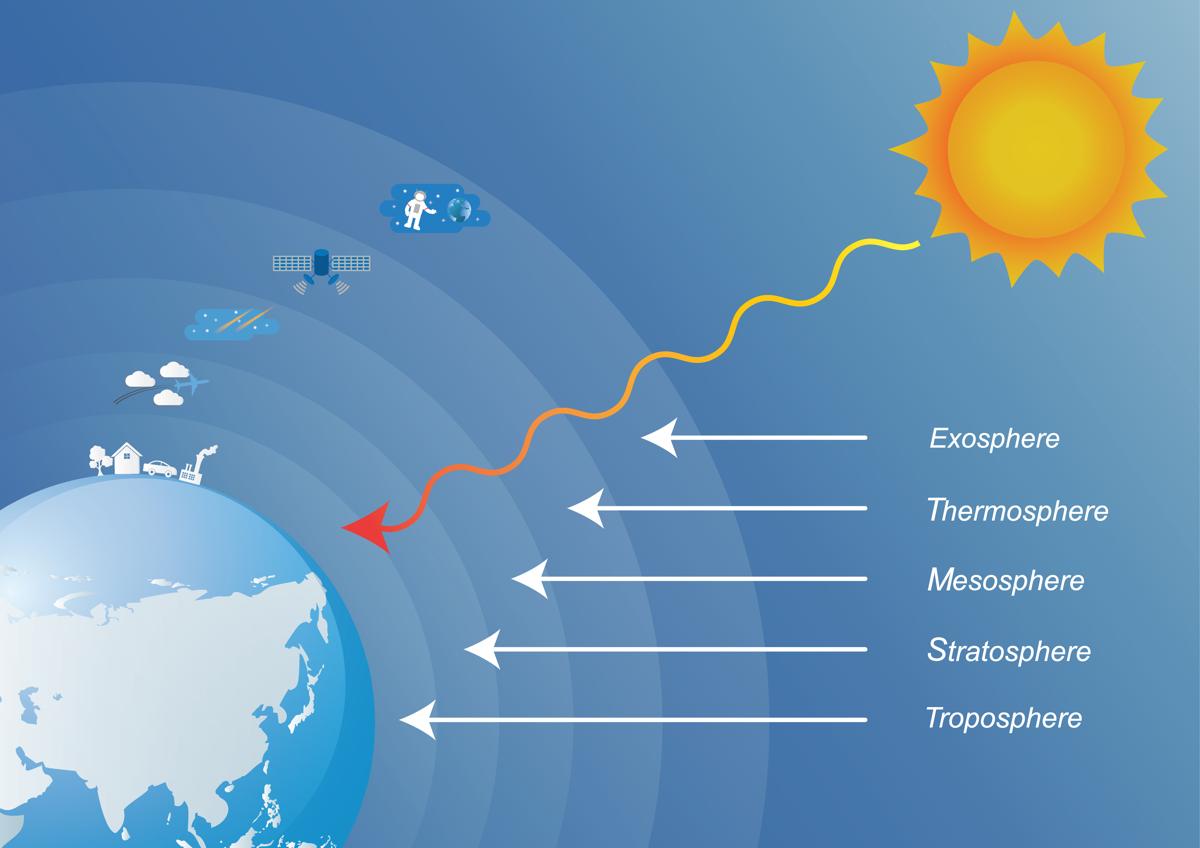The Earth’s atmosphere is divided into several layers, each with its own unique characteristics and functions. Below is an overview of the main layers:
1. Troposphere: The lowest layer of the atmosphere, extending from the Earth’s surface up to about 12 kilometers (7.5 miles) high. This is the layer where weather occurs, and it’s where we live and breathe.
2. Stratosphere: The next layer up, extending from 12 to 50 kilometers (7.5 to 31 miles) high. The stratosphere is a stable layer, with little mixing or circulation. It’s where the ozone layer, which protects us from UV radiation, is found.
3. Mesosphere: The third layer, extending from 50 to 80 kilometers (31 to 50 miles) high. In this layer, the temperature decreases with altitude, and it’s where meteors burn up when they enter the Earth’s atmosphere.
4. Thermosphere: The fourth layer, extending from 80 to 600 kilometers (50 to 373 miles) high. This layer is where the temperature increases with altitude, due to the absorption of solar radiation by gases such as oxygen and nitrogen.
5. Exosphere: The highest layer, extending from 600 kilometers (373 miles) to several thousand kilometers above the Earth’s surface. In this layer, the atmosphere gradually merges with the interplanetary space.
Below are some key characteristics of each layer:
Troposphere:
- Temperature increases with altitude.
- Weather occurs here.
- Atmosphere is densest
Stratosphere:
- Temperature remains constant with altitude.
- Ozone layer present.
- Little mixing or circulation.
Mesosphere:
- Temperature decreases with altitude.
- Meteors burn up here.
- Little atmospheric gases present
Thermosphere:
- Temperature increases with altitude.
- Atmospheric gases absorb solar radiation.
- Aurora borealis (northern lights) and aurora australis (southern lights) occur here
Exosphere:
- Atmosphere merges with interplanetary space.
- Atomic oxygen and helium present.
- Atmosphere is very thin.
